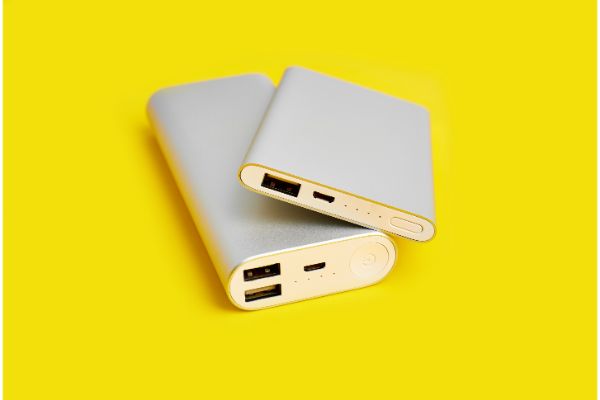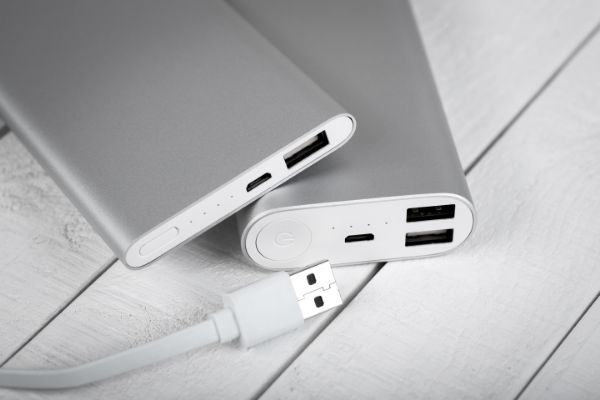Disclaimer: This post may contain affiliate links, meaning we get a small commission if you make a purchase through our links, at no cost to you. For more information, please visit our Disclaimer Page.
From laptops to smartphones, having many portable devices at our fingertips makes daily life easy to manage. We can perform various business operations, expand our entertainment options, keep track of different schedules, and find the answers to almost any question instantly.
We can do these things from almost anywhere, thanks to broader wireless network coverage. However, the devices that we take with us run on special batteries. Like any electronic unit that does not have its power source, the battery is a crucial part that maintains its functionality, especially when we are on the go.
Nowadays, power banks fill a void between simple battery use and main power from dedicated outlets. Thanks to these accessories, we can recharge the batteries on our devices without access to a primary power source.
Some people might wonder about the mechanics and makeup of power banks, and we will try to answer some of the uncommon questions they might have in our article below.
Table of Contents
Why Do Power Banks Have Two Ports?
Once you purchase a power bank, you may notice its dual ports. It contrasts with many other accessories that only use a single port. Of course, various manufacturers make different models of power banks to their specifications, but all such products on the market should have at least two ports.
When we talk about the different ports this way, we usually skip over the minor input port you might see. As the name suggests, the input port is the one you will use when you need to plug in the power bank itself to top up the internal power pack that stores the energy it gives out. However, you may notice at least two USB ports on any power bank you purchase.
You can use the different ports on your power bank to charge two devices simultaneously at their most basic level. Although it is the quickest way to get your devices running again, your power bank will use more energy.
However, you might also notice that the different USB ports with your charger display different wattages when you look at the headings the manufacturer prints alongside the ports. Although these readouts have other numbers, they still deliver the same wattage. We can use hypothetical numbers such as 12 and 18 watts to illustrate this point.
In most cases, manufacturers will convert the wattage numbers you see on your power bank into amp values. Therefore, higher base numbers will produce a more significant number of amps. With more amps, you should be able to charge your devices faster than you would otherwise.
However, it is a good idea to remember that some devices may have hardware limitations that slow down their charging capacity. It is true even if you switch the unit to a port with a higher value.
For some power banks, the ports may list amp values. For example, some power banks indicate that they have 1A and 2A outputs, respectively. You can use these numbers as a guide to figure out which port you might need. Some devices may only need the one with a smaller value. If this is the case, it will not affect how fast the bank charges the device. It is true even if you plug your device into the faster port.
Do Portable Chargers Come Fully Charged?
Generally, most power banks you purchase won’t have a full charge when you take them out of the box. However, it is not uncommon for them to have at least some of the charge. That’s because manufacturers charge these devices before shipment.
Even if the power banks have a full charge based on the manufacturer’s preferences, the internal supply could be less than its full capacity if it has been sitting on a shelf waiting for someone to purchase it.
Whatever the case, many companies will recommend that users take the time to charge their new power banks up to their full capacity before using them.
Why Do Power Banks Have Flashlights?
Some power banks come with functional flashlights. Although there could be a few reasons for this additional feature, one of the most common is power outages. During a power outage, you won’t be able to charge any of your devices. Therefore, fully charging your electronics is crucial for such situations. In addition, it helps you stay in touch with others or call for help.
A power bank is beneficial during this time, but you don’t want to lose it in the dark. The flashlight helps you keep the bank in sight. Additionally, you can use it to find your way around a dark house when you are searching for your other devices. Keeping the light on allows you to see things like a phone or tablet. Furthermore, the accessory is excellent for helping you find the ports you need on both units to make a solid connection between them for charging.
Can a Portable Charger Charge Itself?
Technically, a power bank can charge itself. It is due to the difference between the voltage of its internal cell and its output. While true for some power banks, it is not meaningful or practical for the average user to try this.
The conversion rates and charging factors that a bank like this would use will not be the total capacity necessary for proper charging. In short, even if you could set a power bank with itself, the device would draw more power than it can put back into itself.
If your goal is to refill the power bank’s capacity, these limits make doing so in this way entirely pointless. It may be more accurate to say that, while a power bank could charge itself, its discharge rate will always be greater than its charge rate.
Why Does My Power Bank Automatically Turn Off?
There are a couple of possibilities why your power bank seems to turn off by itself. First, we have the legitimate feature of fully charging the device you attach to the power bank.
Most manufacturers build their power banks in ways that allow the units to sense when the devices you might connect to them charge up fully. Once the banks fill the batteries, they detect that the units connected to them no longer draw power. So the power banks will turn off automatically to conserve their remaining energy.
If you leave your device connected to a power bank, it may discharge a tiny bit of its energy over time. When this happens, the power bank will probably switch on again to top up the battery in the device.
Secondly, you may find that some power banks shut off automatically after only a few minutes of use. It can be true even if you know the device you connect to has not reached its full charge.
In this scenario, you could be dealing with a faulty product you need to replace. Otherwise, you may have an old power bank on your hands. If your power bank is new, it is worth checking if you got it from a reputable brand.
Some lesser-known brands may use inferior parts that hold a fraction of the capacities they might list on the label. Always try to go with power bank brands that the community knows and trusts.
Conclusion
Keeping the batteries on your favorite devices topped up to their maximum can be crucial, particularly when you are not near reliable power sources. Portable power banks fulfill this need nicely, and even the largest ones are usually compact enough to be relatively mobile. If you’re new to the world of power banks, you can find answers to common questions about them here.


